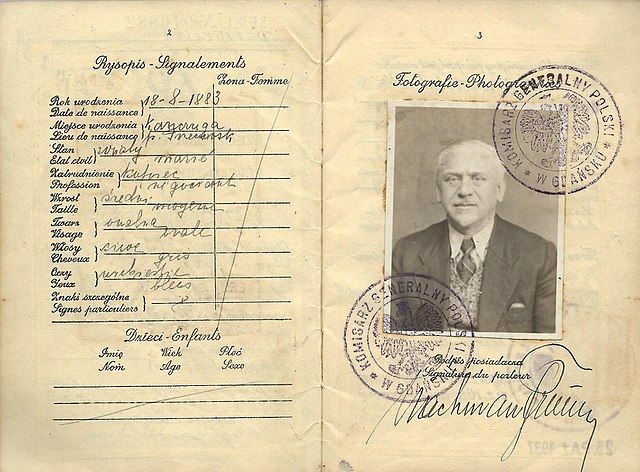The Free City of Danzig was a city-state under the protection and oversight of the League of Nations between 1920 and 1939, consisting of the Baltic Sea port of Danzig and nearly 200 other small localities in the surrounding areas. The polity was created on 15 November 1920 in accordance with the terms of Article 100 of the 1919 Treaty of Versailles after the end of World War I.
Danzig (purple) with parts of Germany (pink) and Poland (green)
1,000 Danzig gulden (1924) depicting City Hall
Passport of the Free City of Danzig
Polish passport issued at Danzig by the "Polish Commission for Gdańsk" in 1935 and extended again in 1937, before the holder immigrated to British Palestine the following year
The League of Nations was the first worldwide intergovernmental organisation whose principal mission was to maintain world peace. It was founded on 10 January 1920 by the Paris Peace Conference that ended the First World War. The main organization ceased operations on 18 April 1946 when many of its components were relocated into the new United Nations. As the template for modern global governance, the League profoundly shaped the modern world.
The 1864 Geneva Convention, one of the earliest formulations of written international law
Lord Bryce, one of the earliest advocates for a League of Nations
Jan Smuts helped to draft the Covenant of the League of Nations.
The League to Enforce Peace published this full-page promotion in The New York Times on Christmas Day 1918. It resolved that the League "should ensure peace by eliminating causes of dissension, by deciding controversies by peaceable means, and by uniting the potential force of all the members as a standing menace against any nation that seeks to upset the peace of the world".








